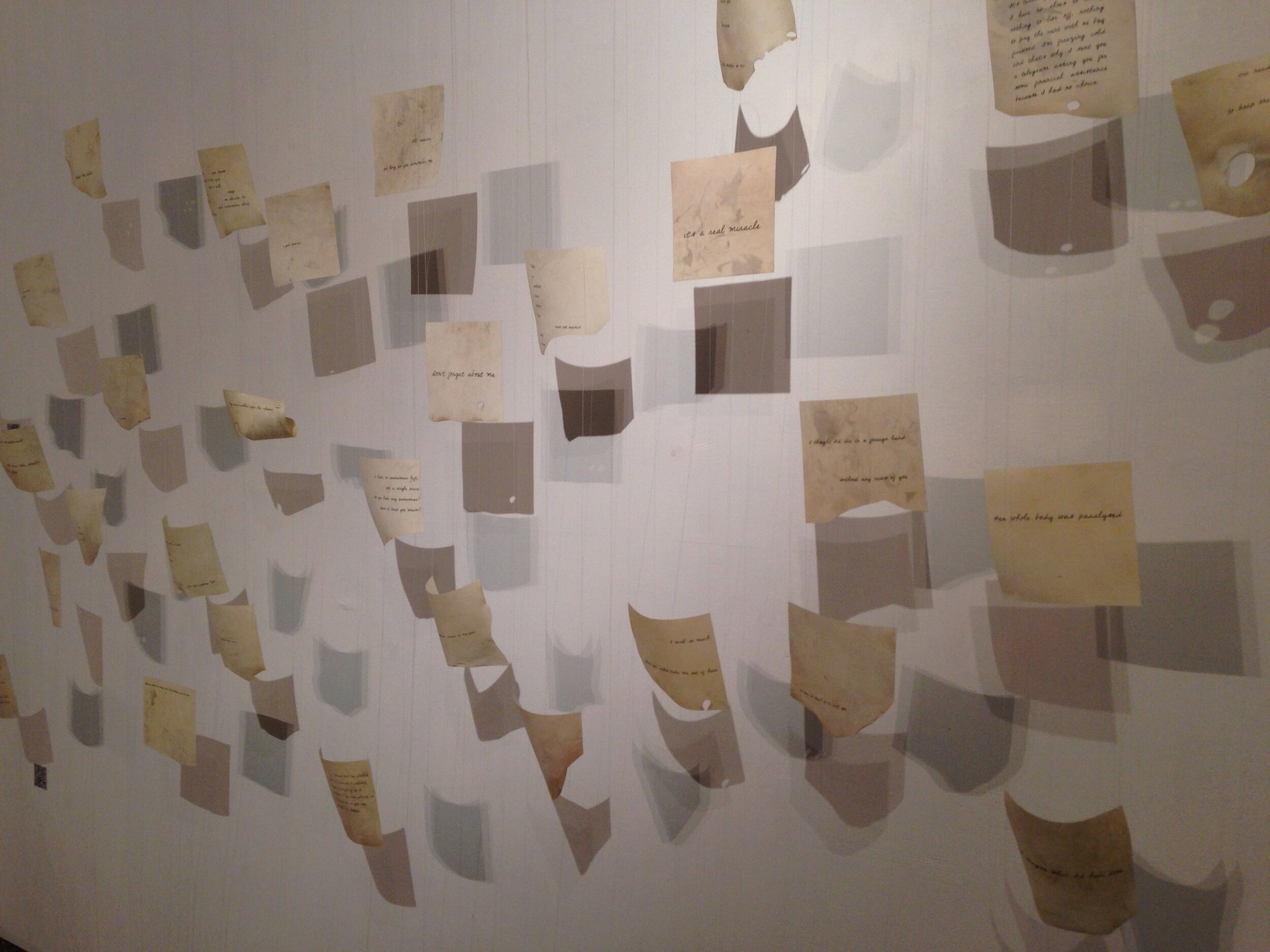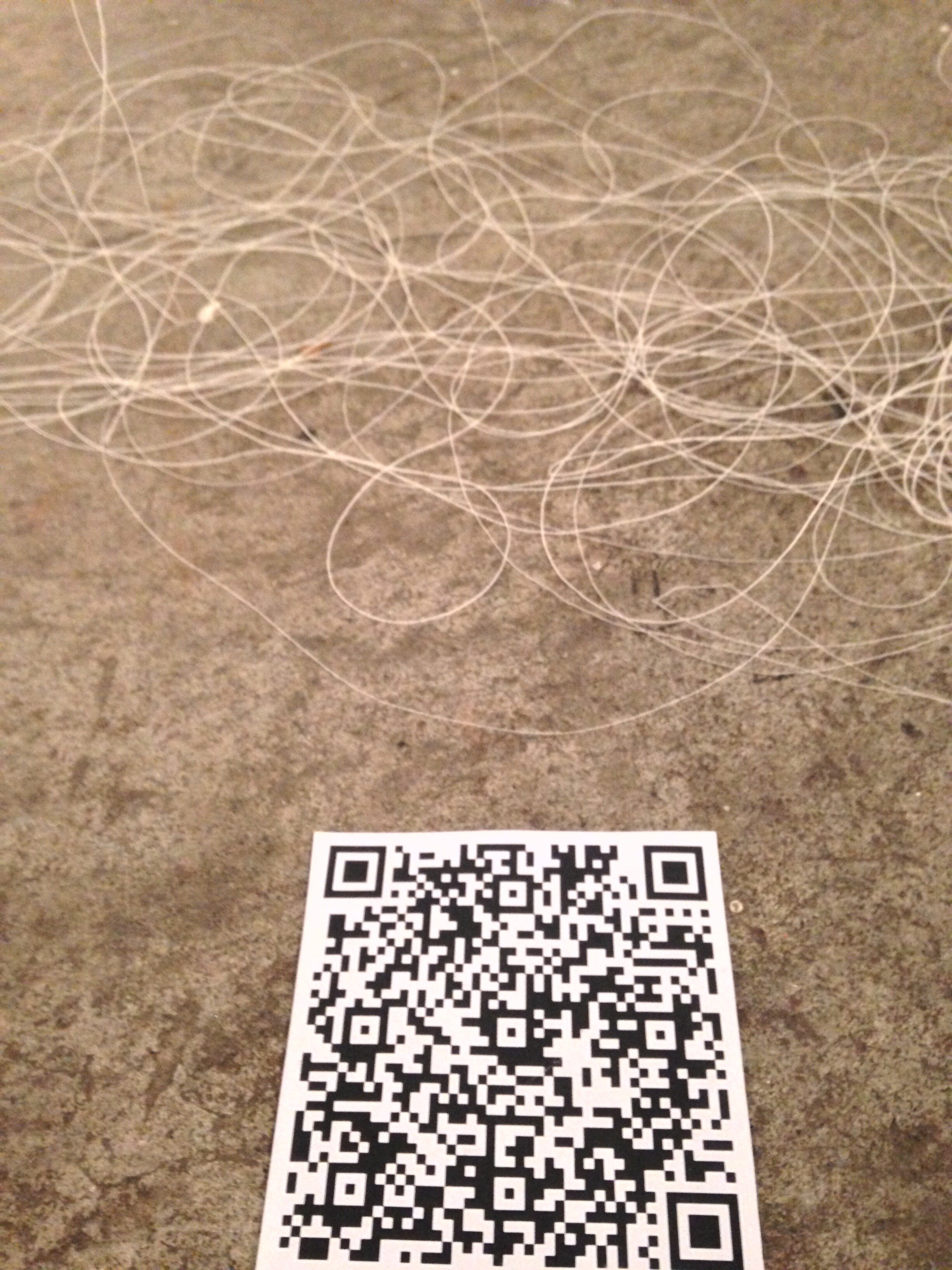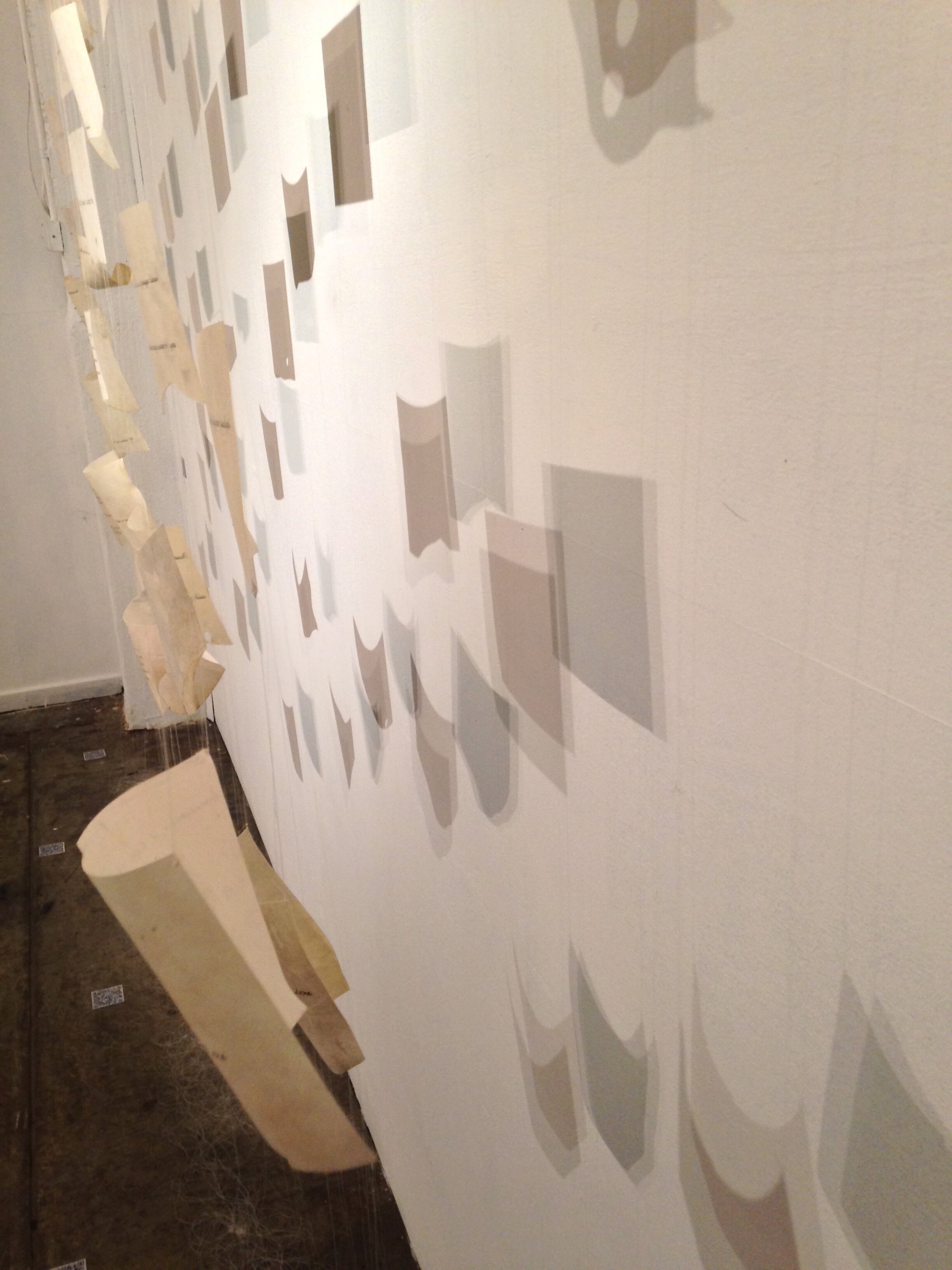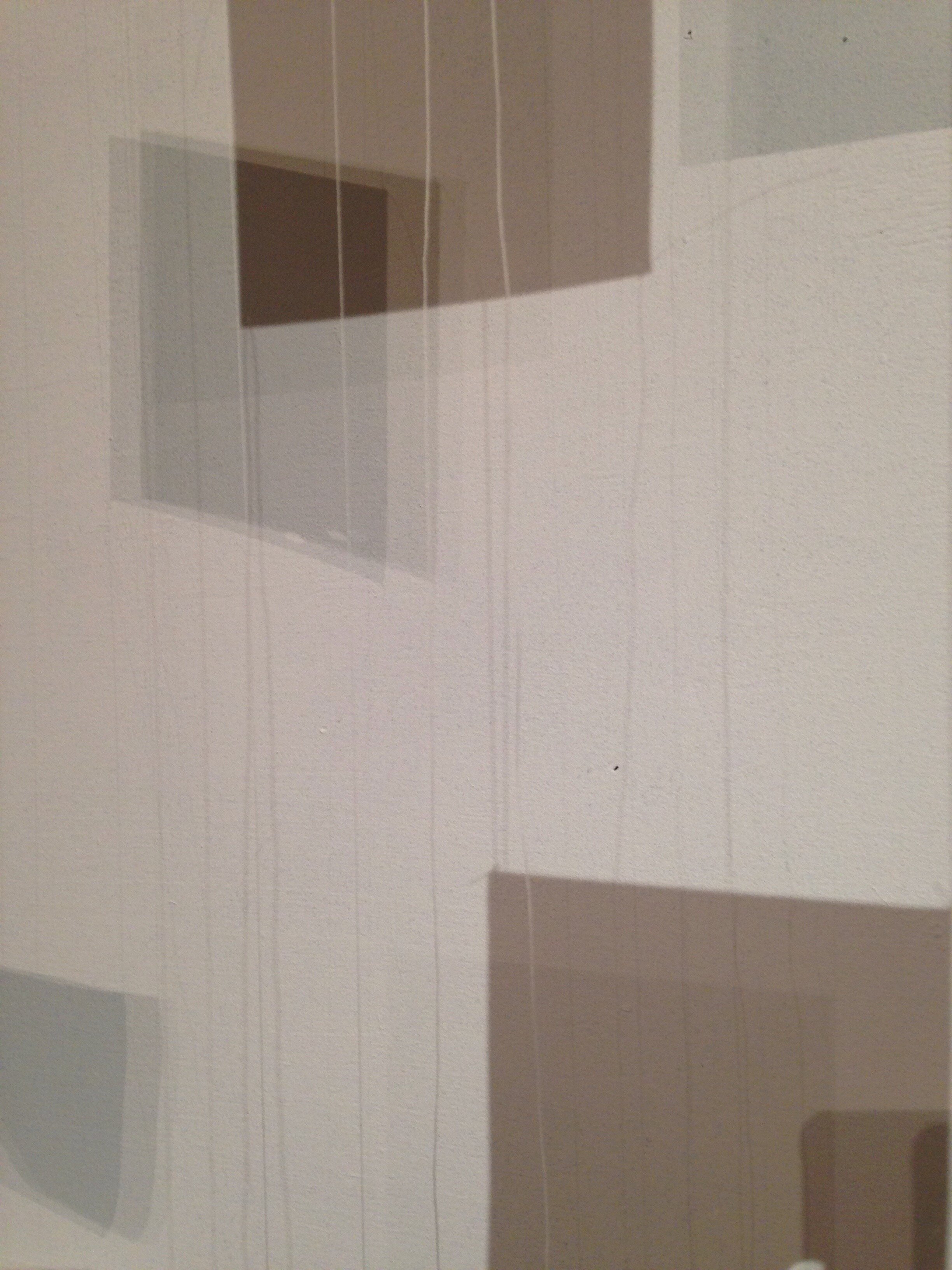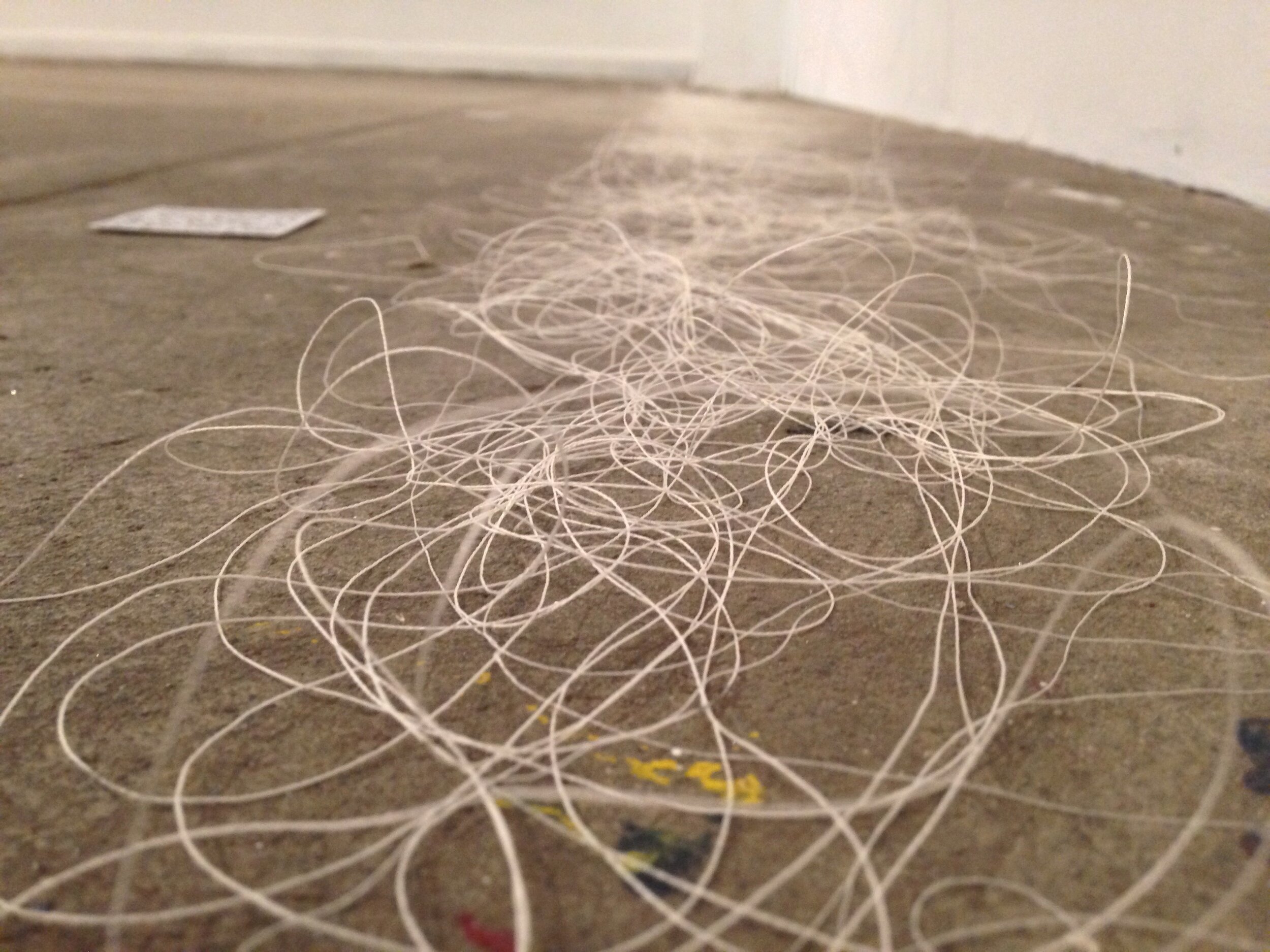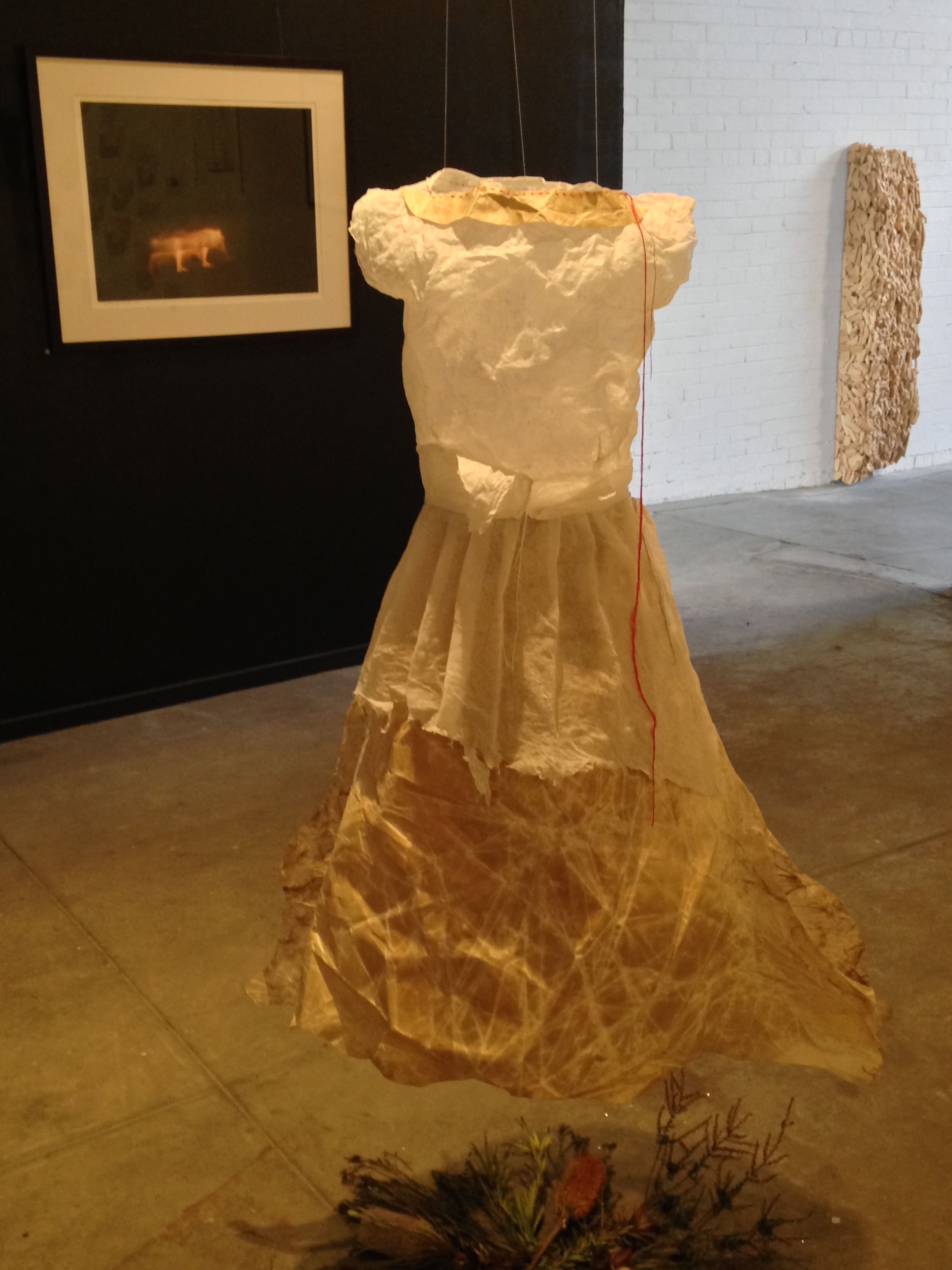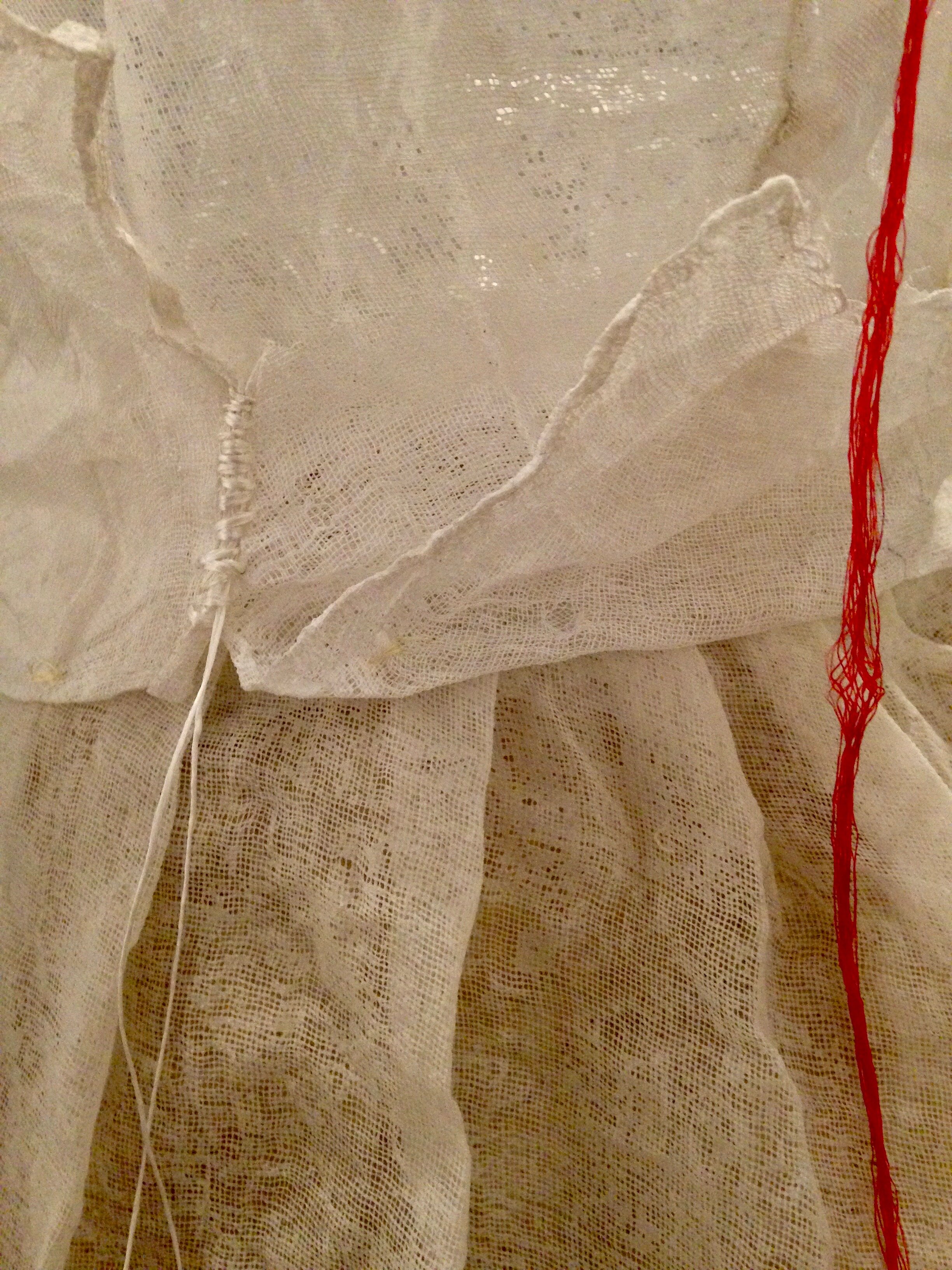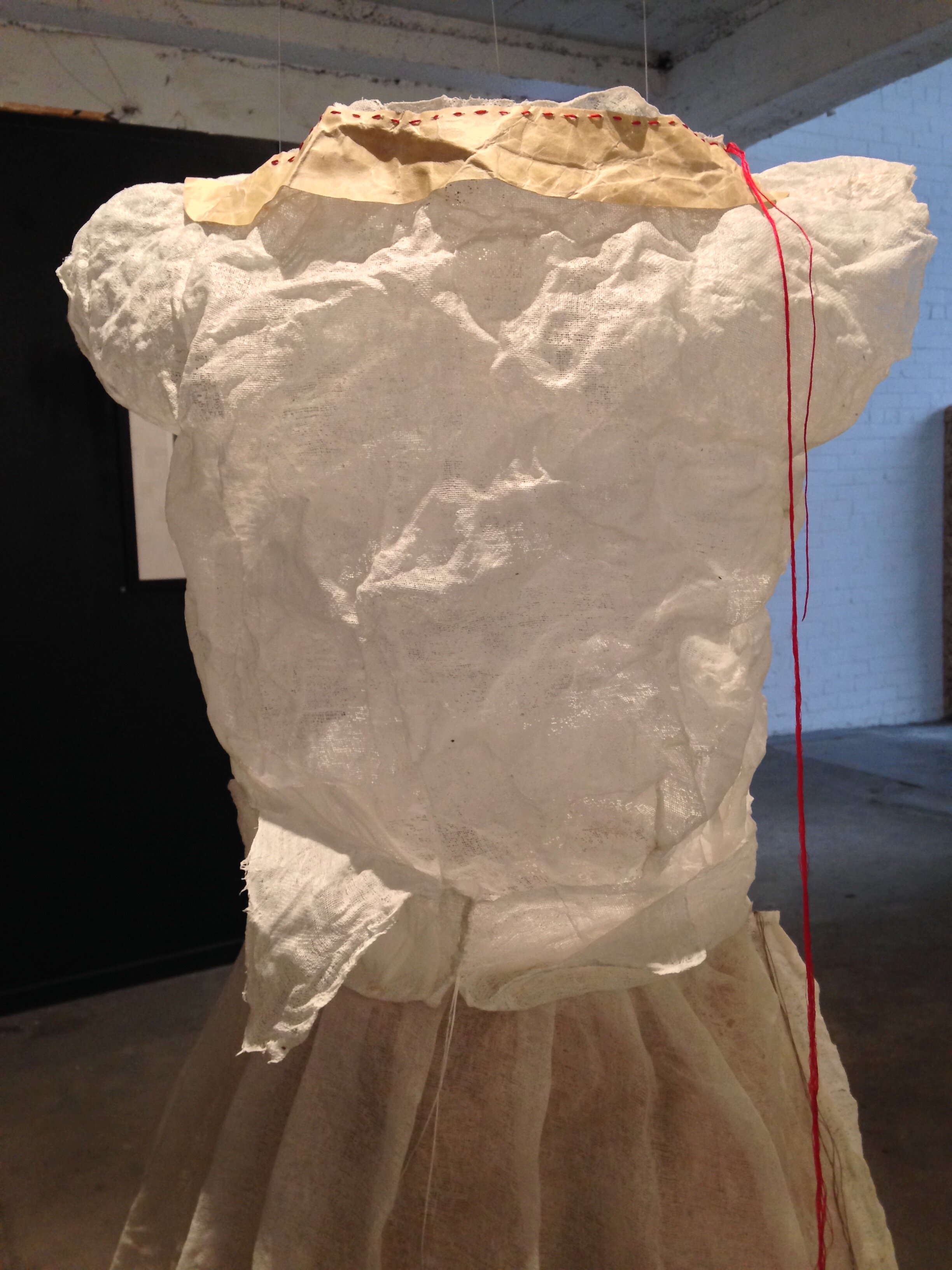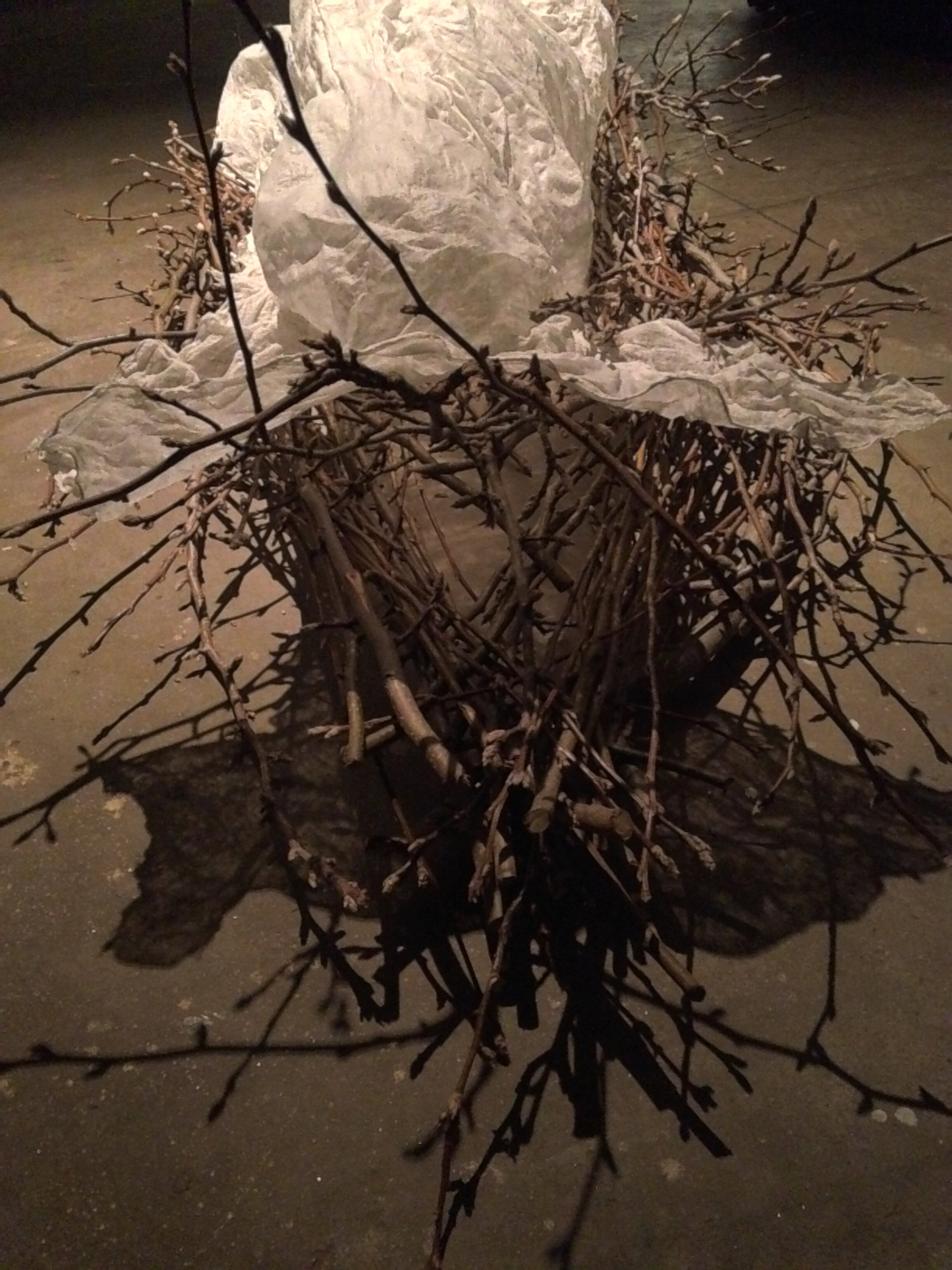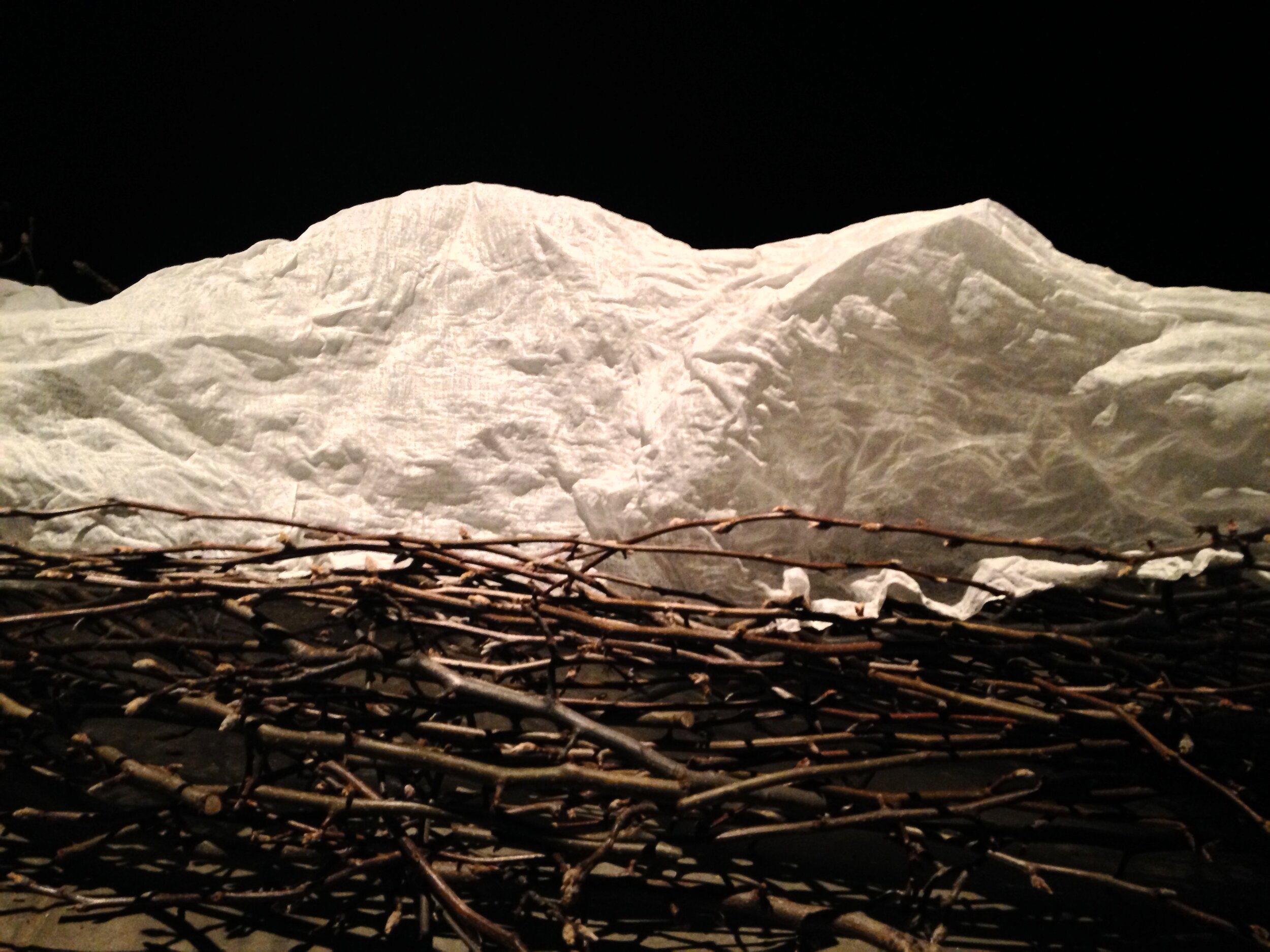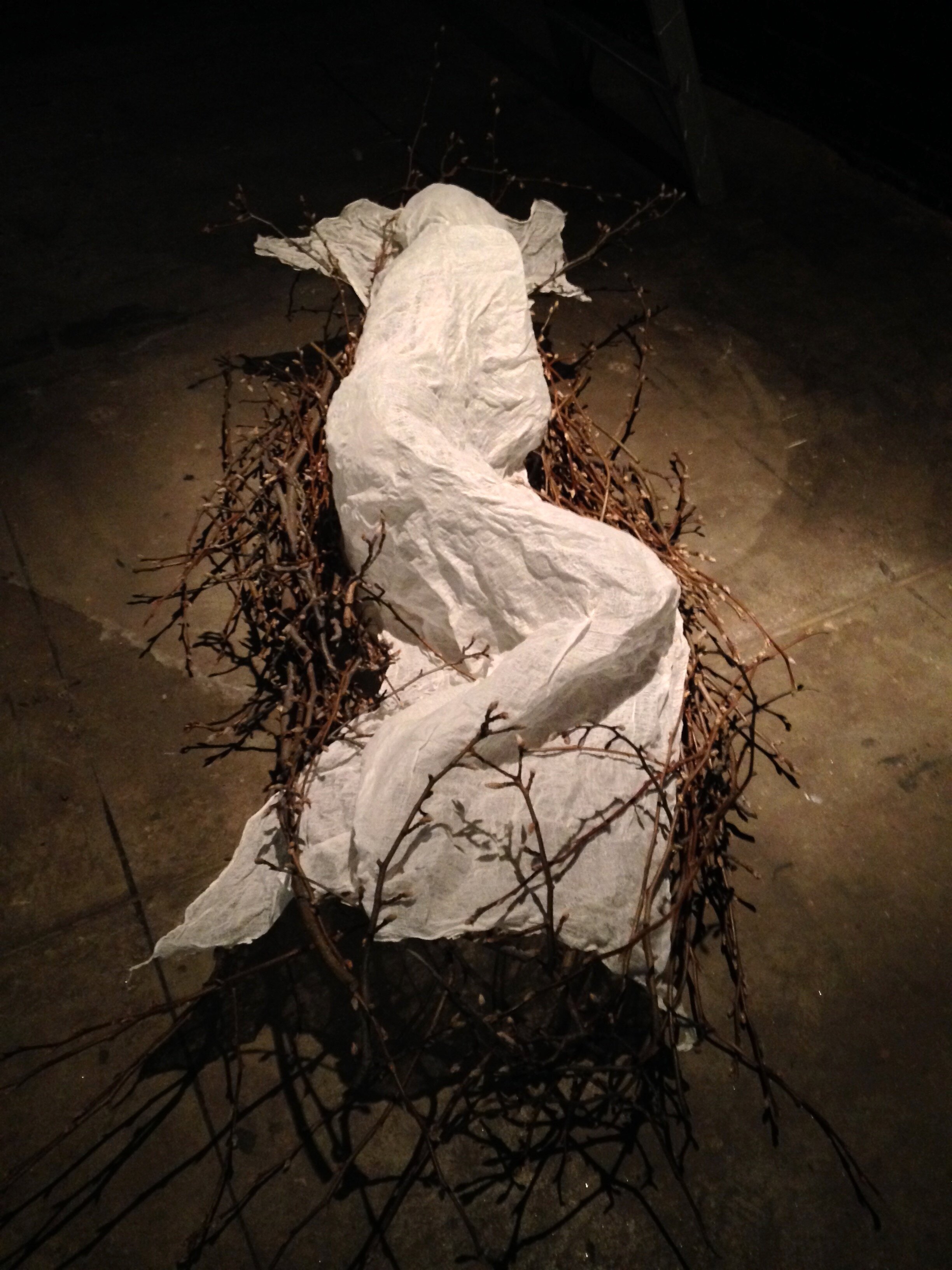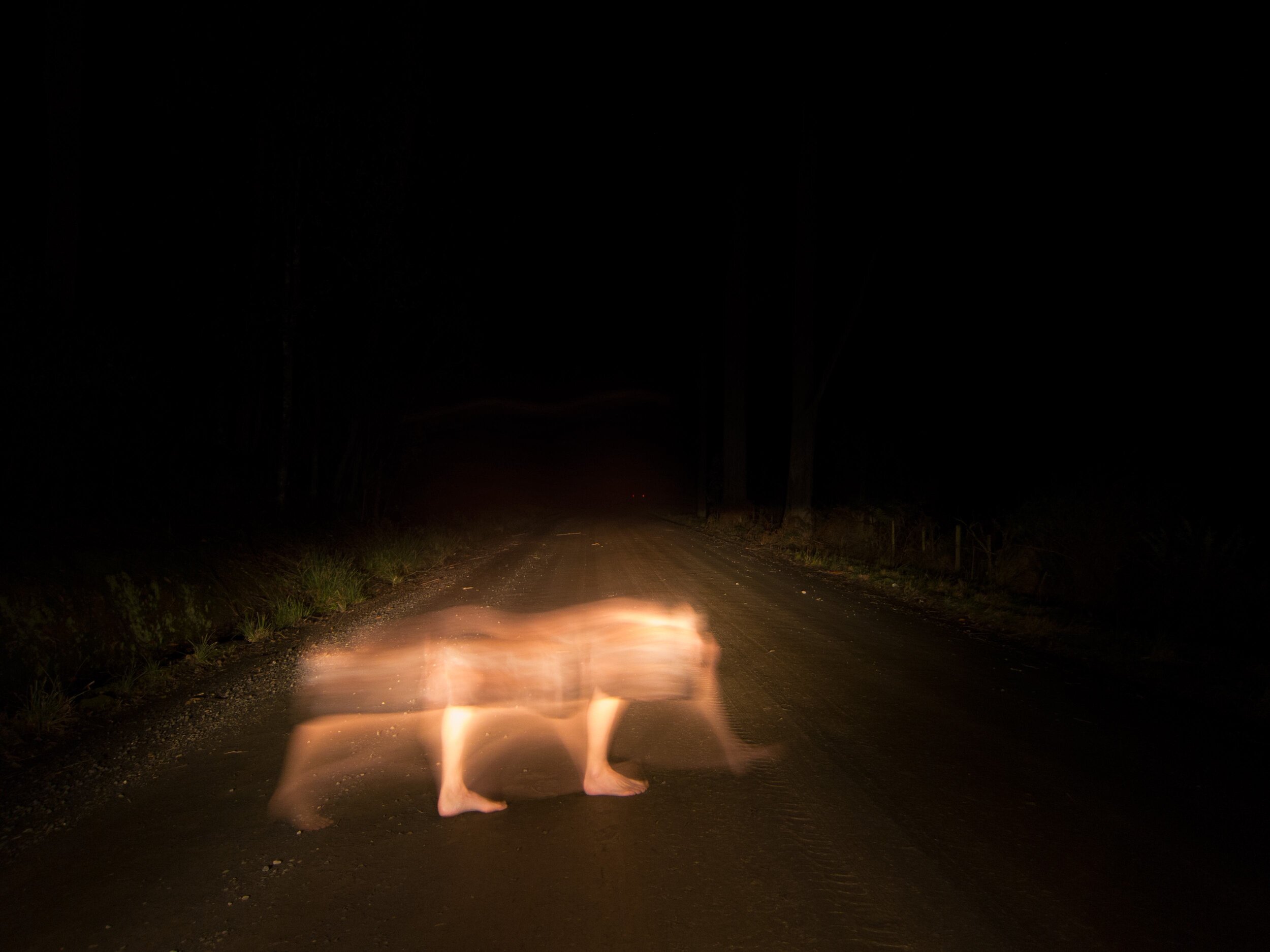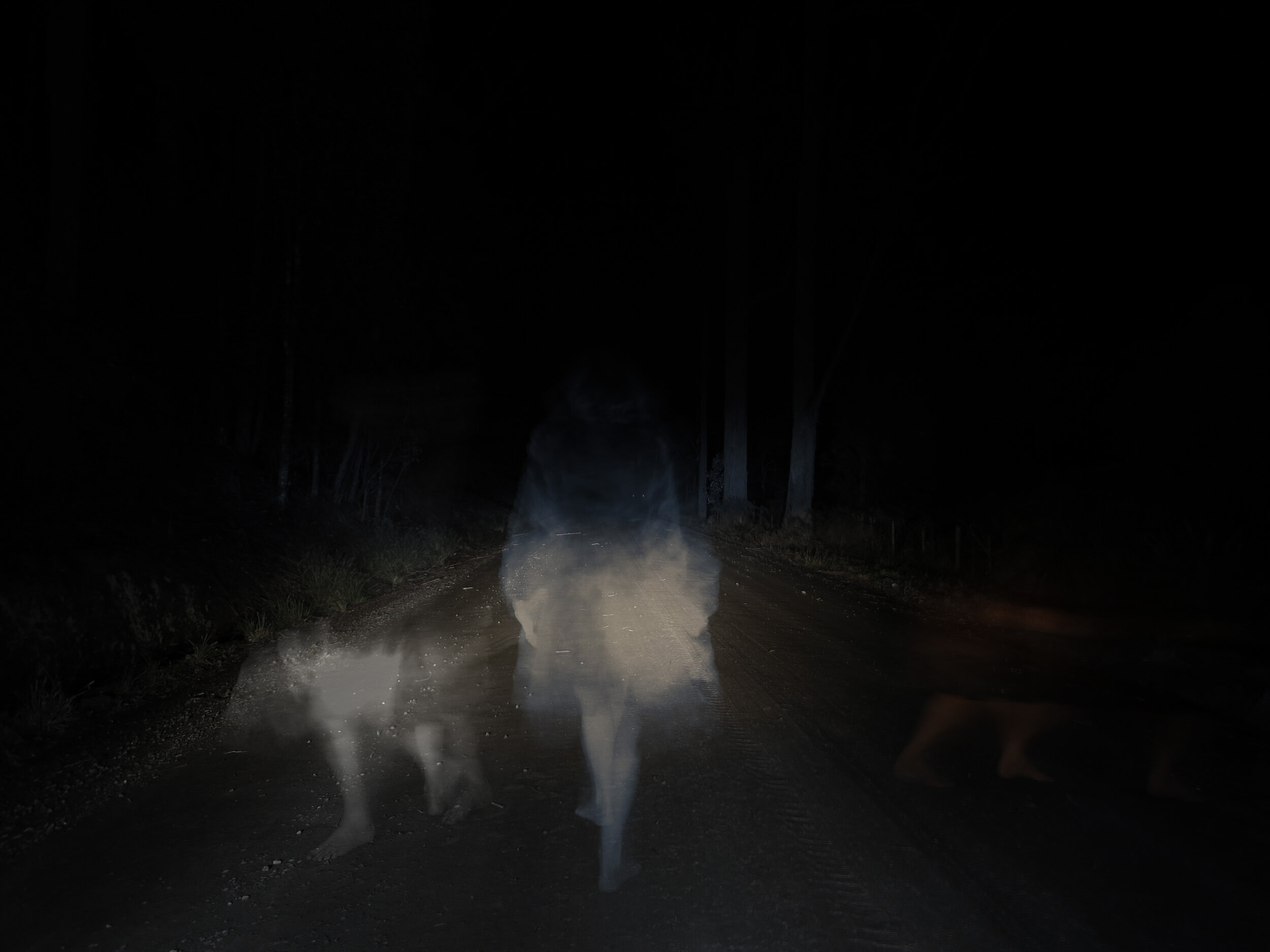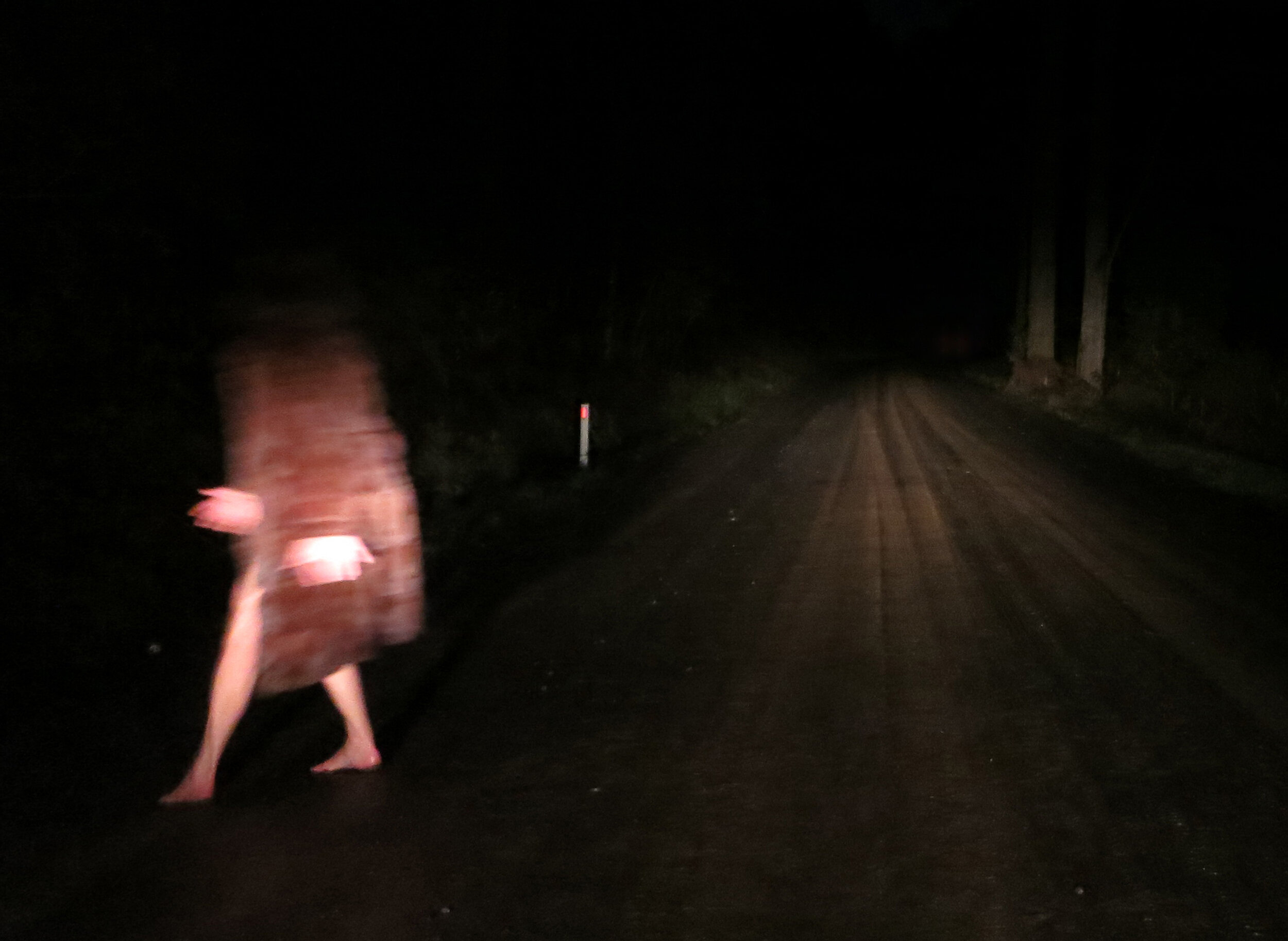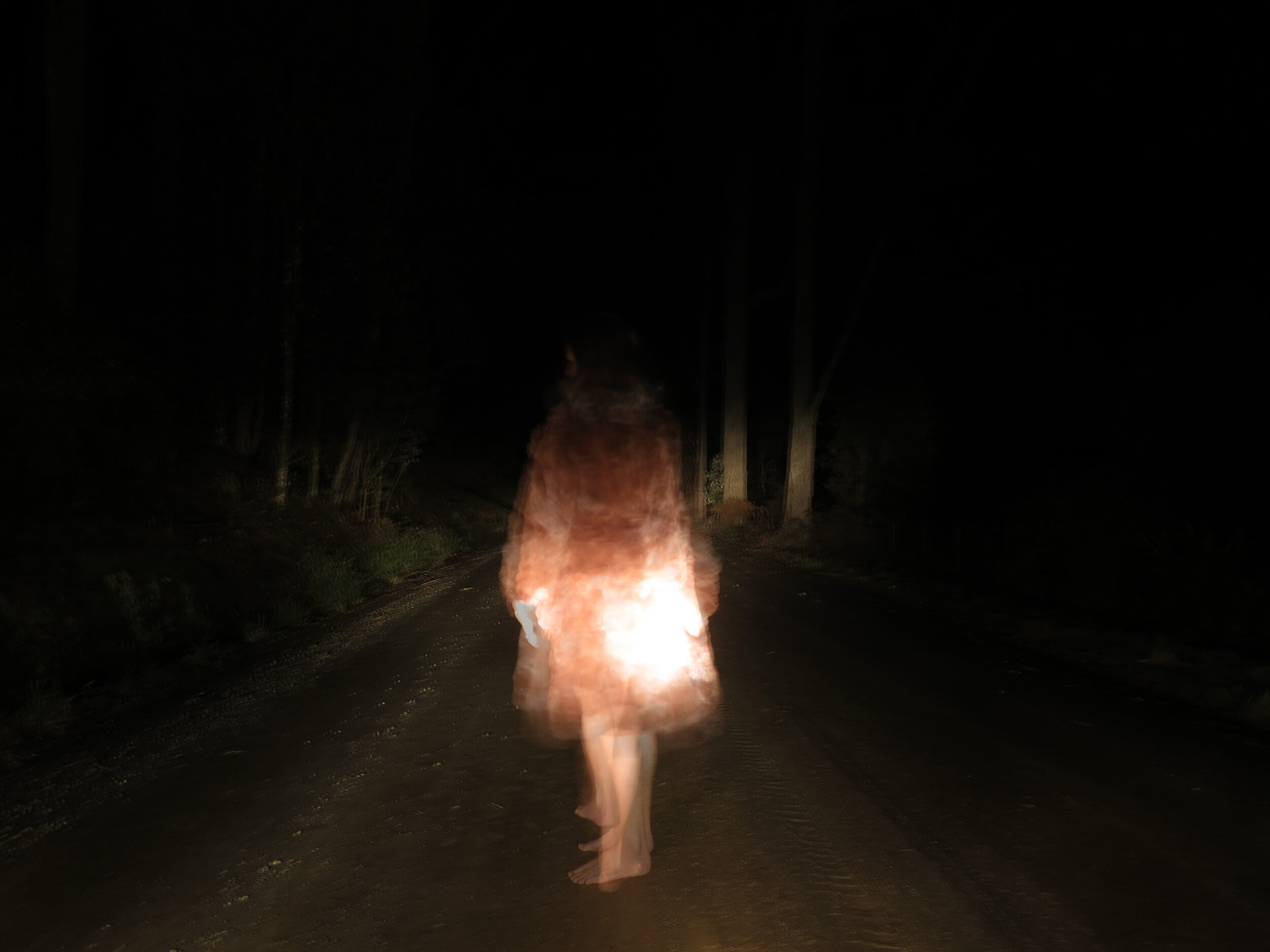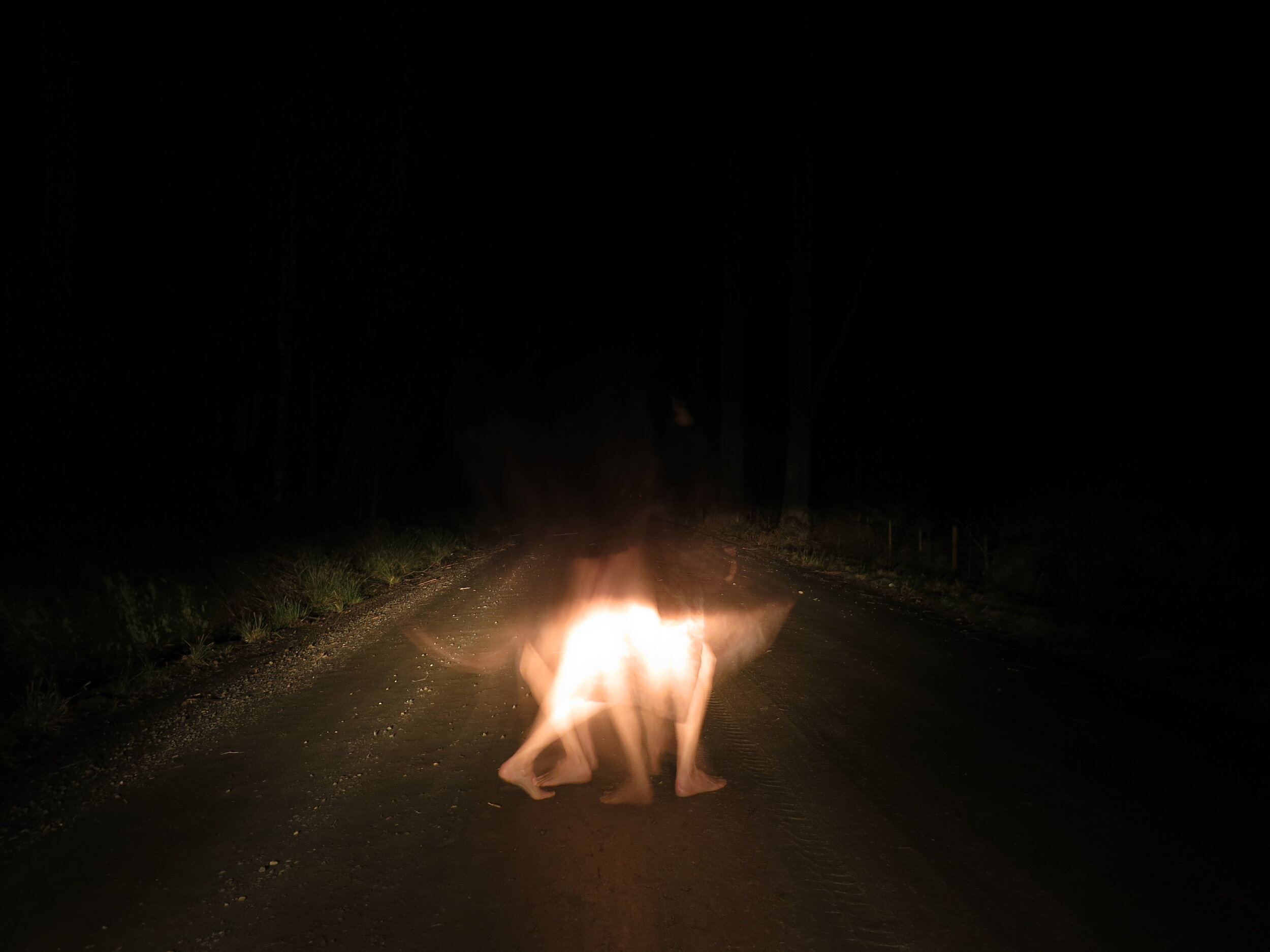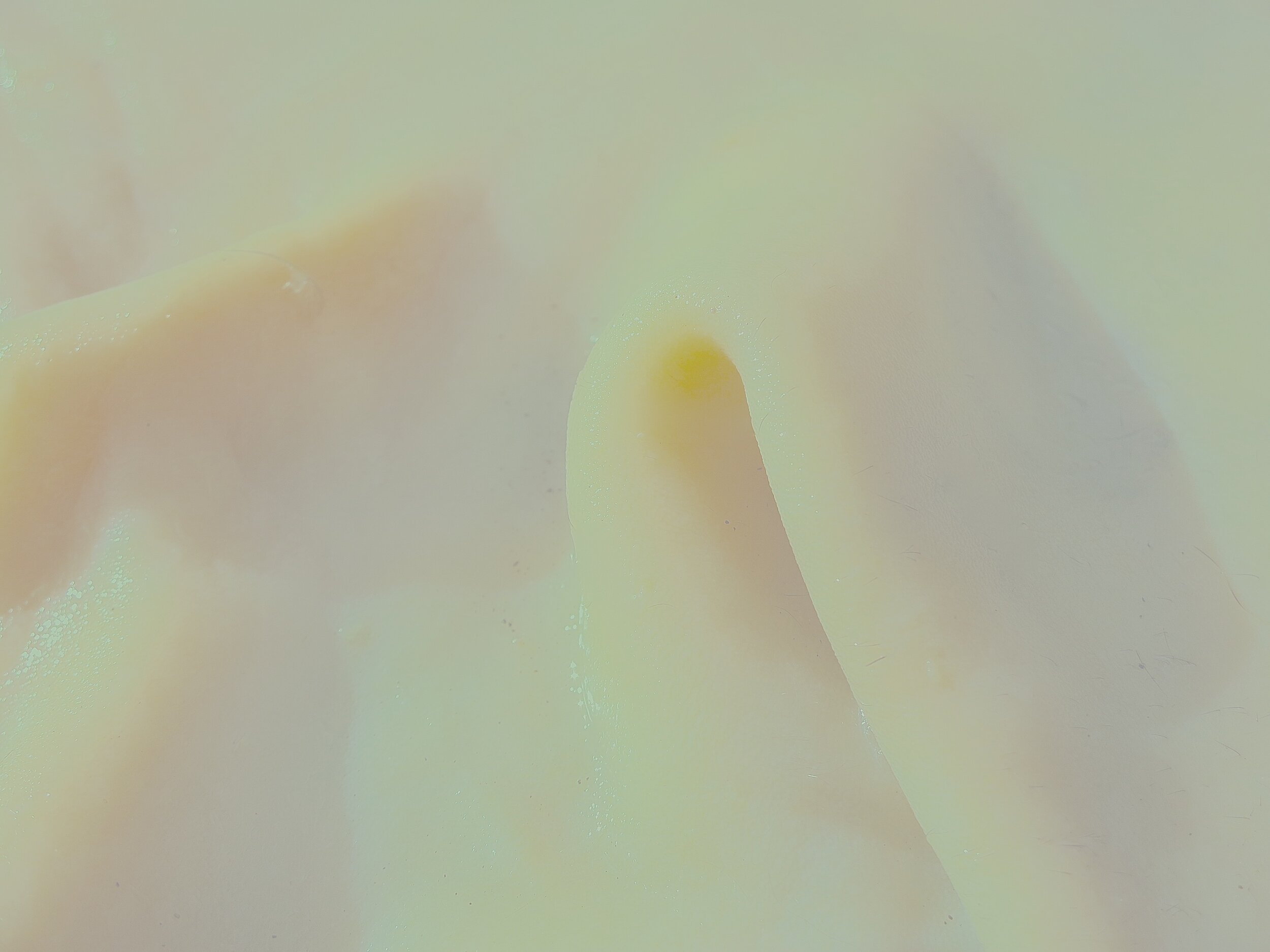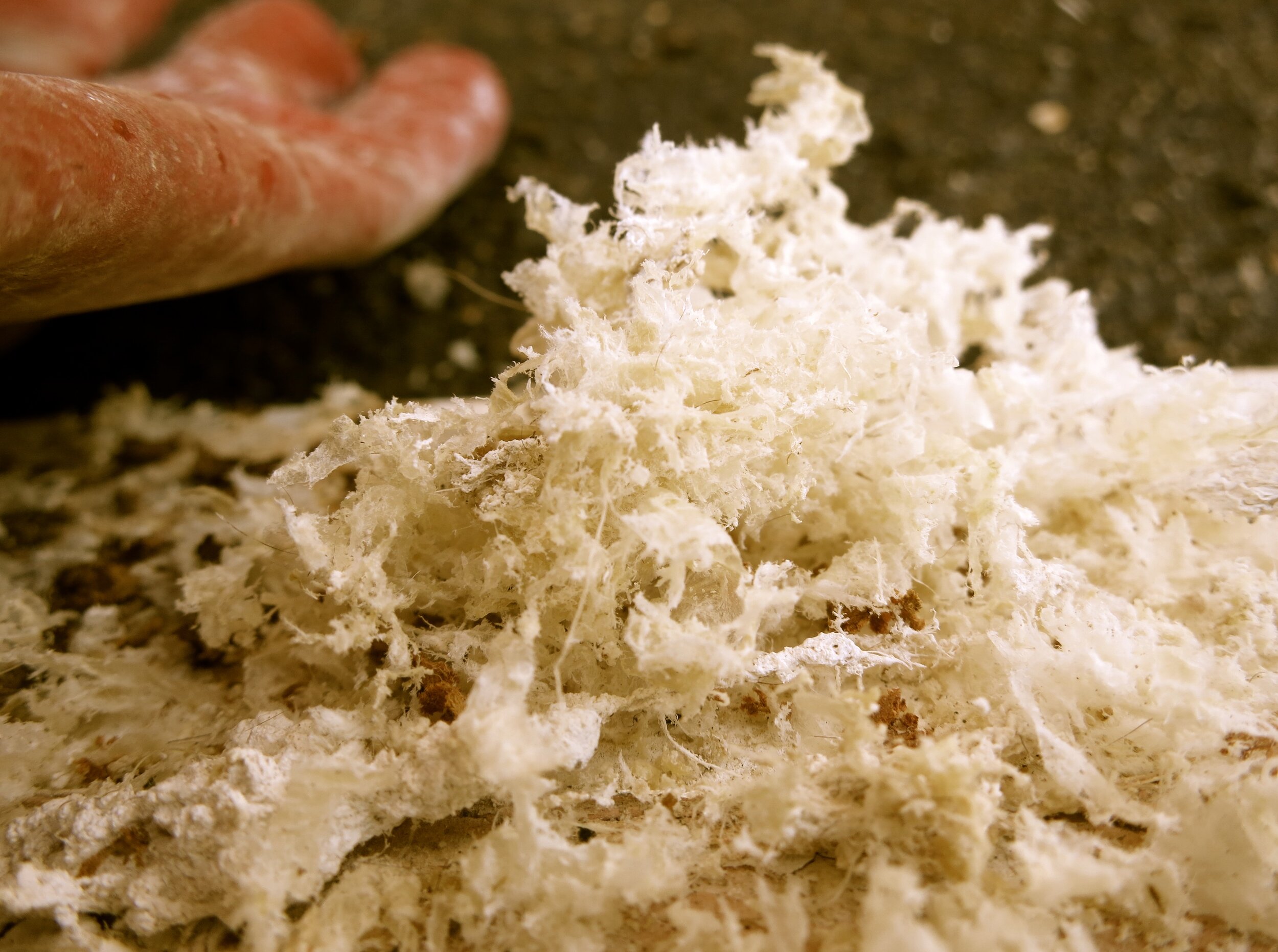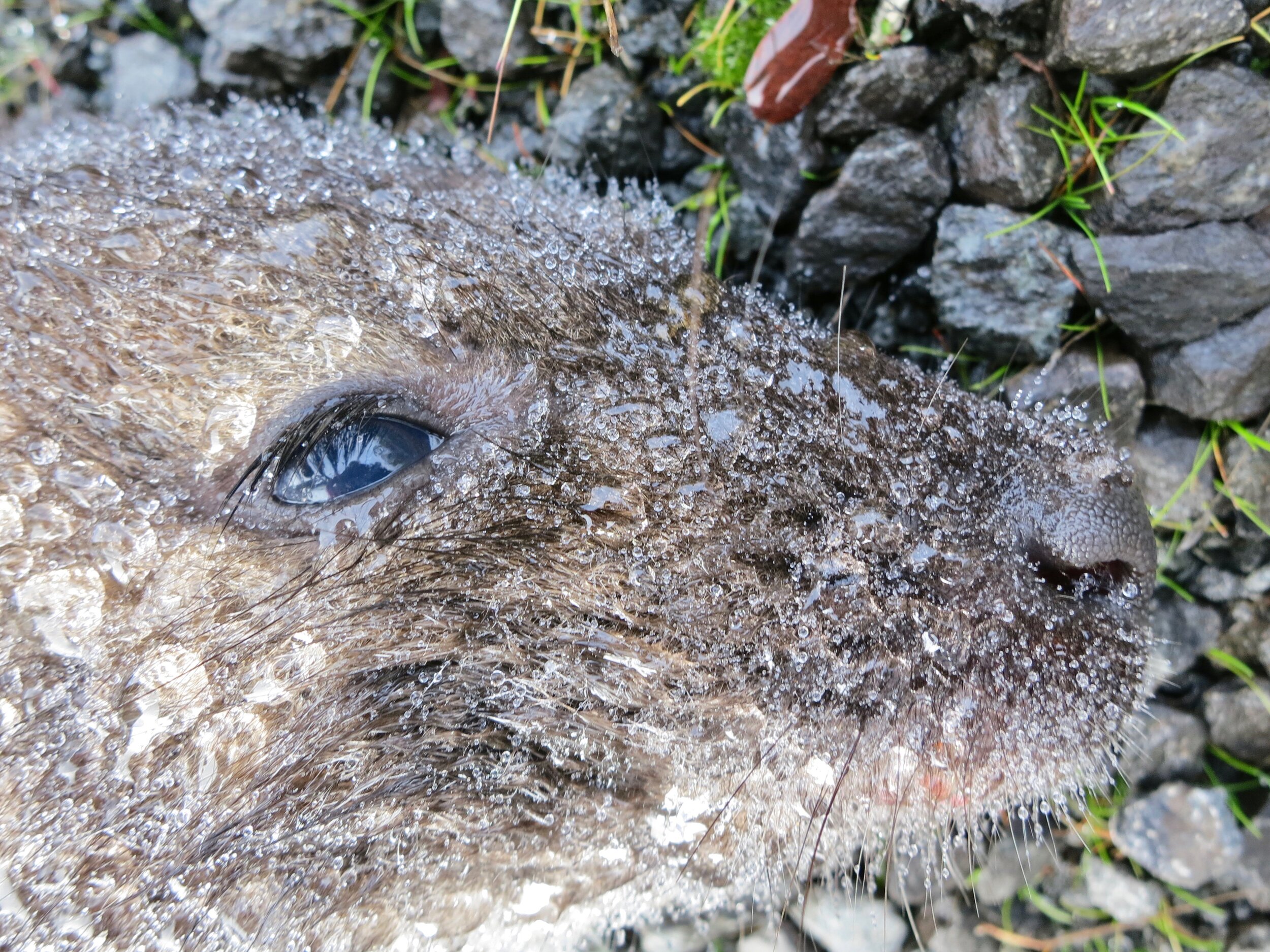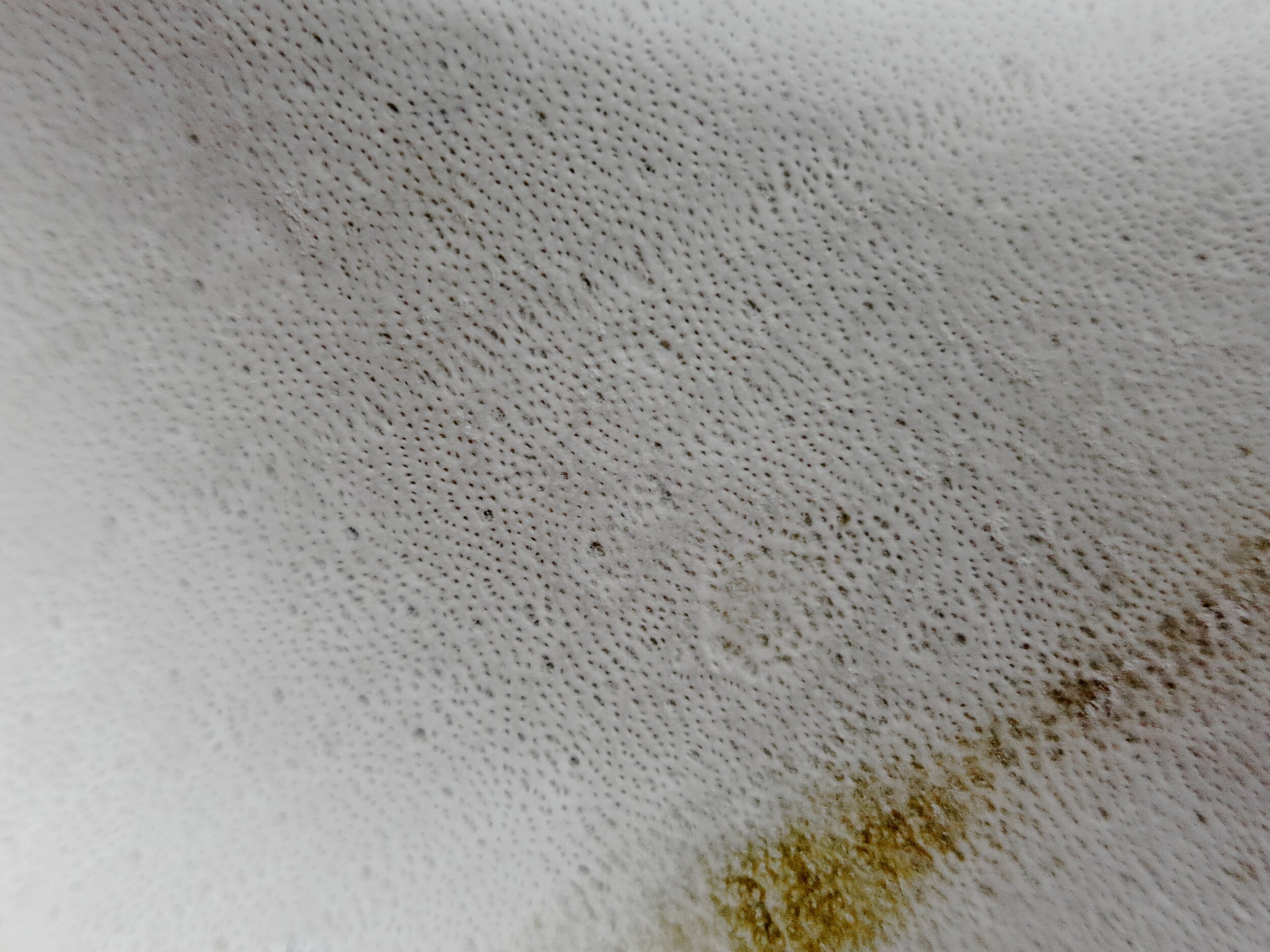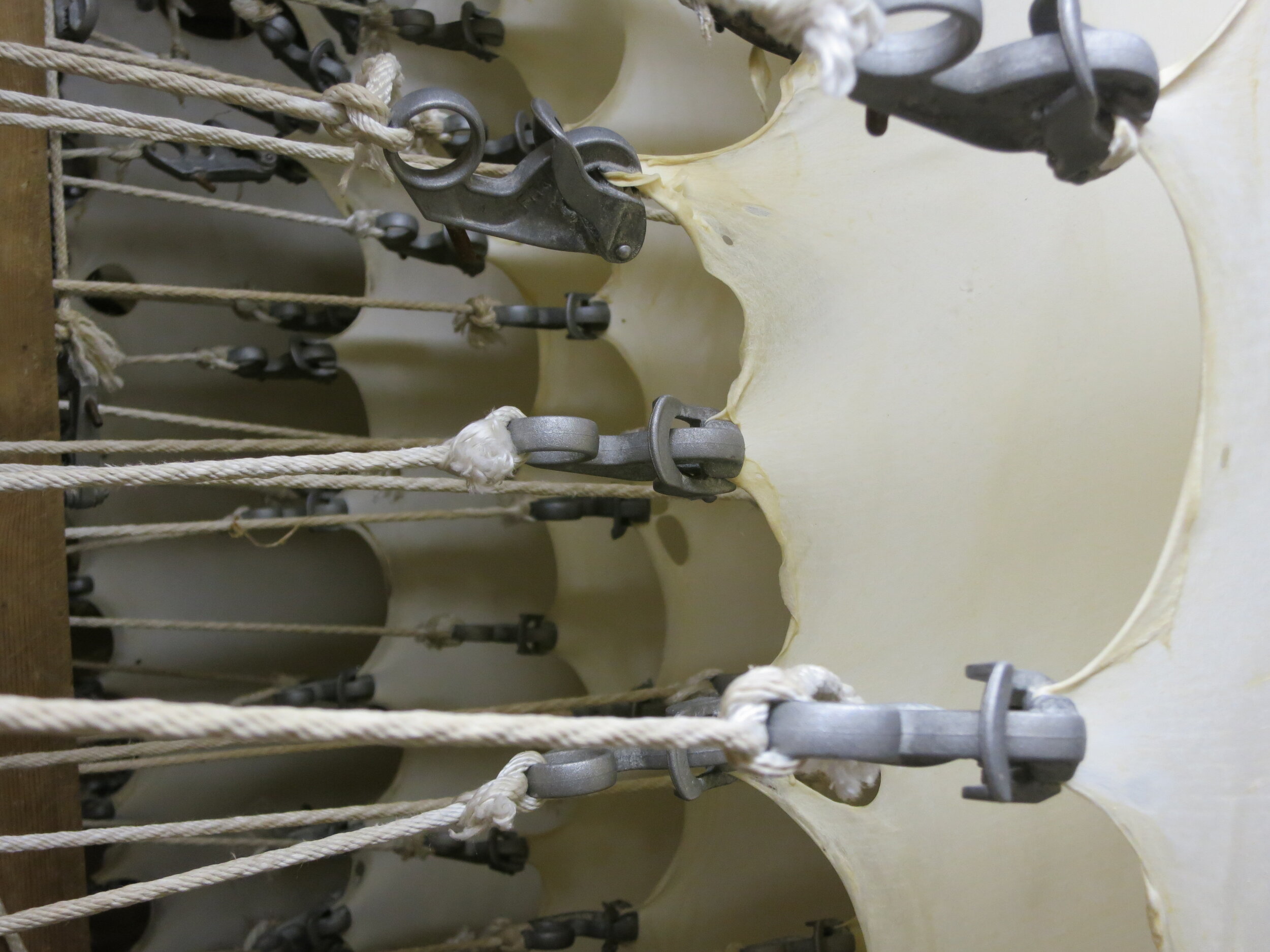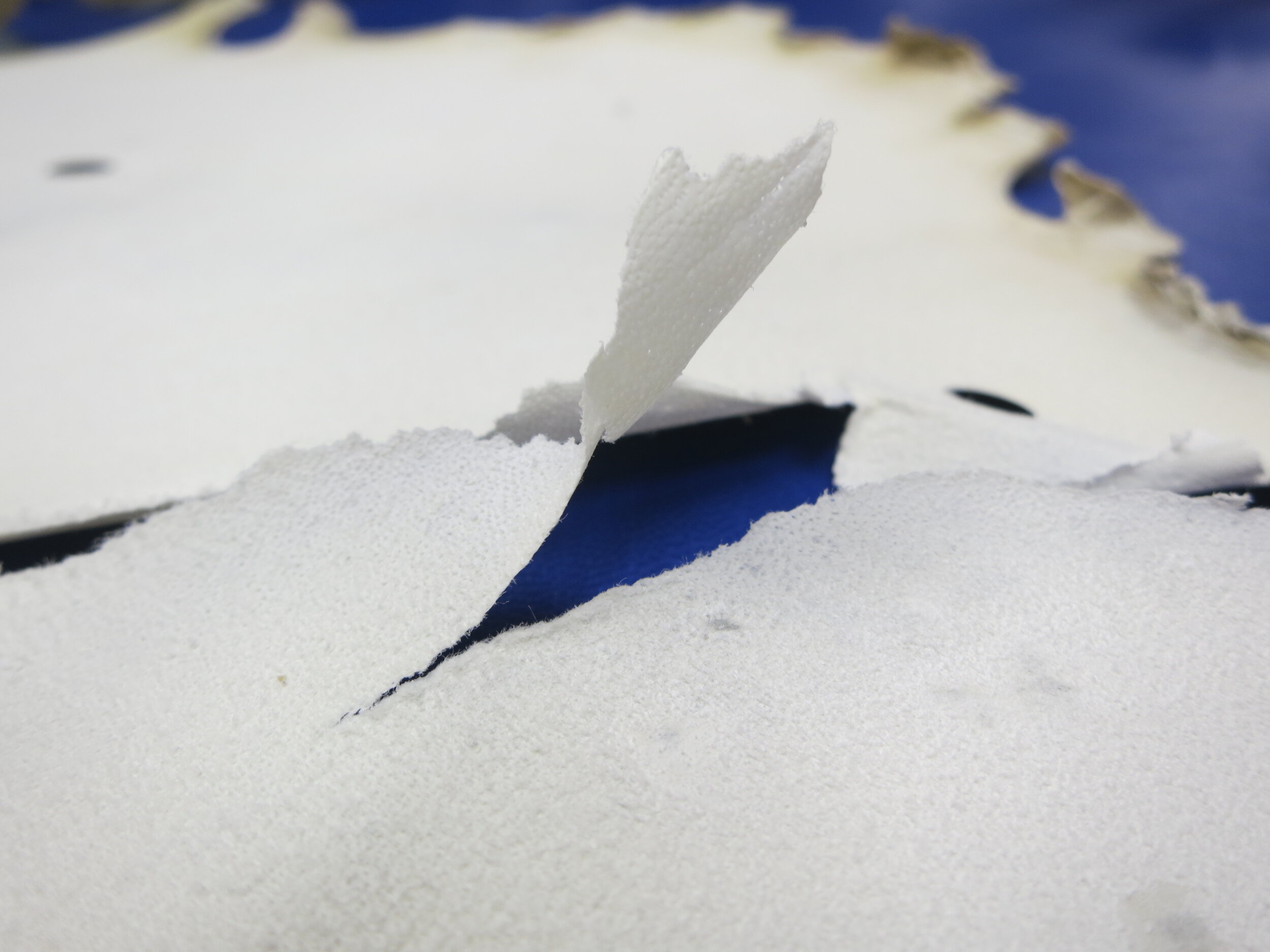
About
Invisible Words is a cross-disciplinary interrogation of the intergenerational impact of the ‘unspeakable’ traumas of a past war. It utilises photography, video, installation and artefacts of skin – a practice situated on the traumatic periphery inhabited by roadkill – to give material form, voice and expression to this sensorial and familial wound.
The solo exhibition for ‘Invisible Words’ was exhibited at the Yarra Sculpture Gallery in Melbourne.
Research, projects and publications are ongoing. ‘Heirloom’ and ‘Meshwork’ are the next iterations of this project, demonstrating the transformative power of a deep engagement with ‘the wound’.
‘Sometimes I have these dreams about you.’ archival photographic colour print on museo silver rag, 81cm x 60cm (32” x 24”)

The inheritance
In 2003, upon the death of my father, I found four letters. Three were written by my grandmother – a woman I never knew and who was rarely spoken about – and the fourth recounted the events that led to her deportation and death in a Soviet workcamp in Siberia in the 1940s. Accompanying the letters were a handful of photographs.
These artefacts, replete as they are with gaps and silences, are not happy testimonies. They expose, in both what is written and not written, the tragic story of a woman – my grandmother – disappeared, absent, silenced. They reveal a history long suppressed – briefly, Stalin’s WW2 invasion and occupation of Poland’s eastern borderlands, the ‘Kresy’, and the ‘erasure’ of its population and culture. They are representative of how family secrets and wounds continue to resonate well and truly beyond their immediate occurrence and the difficulties inherent in surmounting such wounds. And, in their appearance, they demonstrate how haunting can manifest when the traumatic is not appropriately addressed.

‘Invisible Words: the semaphore of skin’ has at its origins these once-hidden artefacts of memory. A doctoral research project, it draws on cross-disciplinary art practices enriched by broad readings from history, philosophy, literary theory and criticism, psychoanalysis, memory studies, feminist theory, folklore and semiotics.
An important focus of this project was exploring the paradox inherent to intergenerational witnessing. How does one witness ‘responsibly’ the unknown - that which can never truly be known, and yet by its very existence implicates the ‘stranger’? From this question, the works, in their making and presentation, became a bridge between the cultural, temporal, and geographic distances that separated the past from the present, the deceased from the living, and thus allowed for a ‘proper mourning’ of this silenced Other.

Works
‘phylactery’ – wallaby parchment, Japanese raw silk organzine thread, digital ink, qr codes (2m x3m).
‘phylactery’ draws on the concept of the ‘memory wall’, traditionally used as a medium to memorialise victims of a traumatic event, as a way of articulating the fragmentary and wounded nature of my grandmother’s letters. In name, it draws inspiration from both the Jewish tradition of wearing leather boxes that contain parchment scrolls inscribed with sacred verses from the Torah, as well as its derivation from the Ancient Greek phylacterion, meaning ‘to guard, protect’, as in the wearing of an amulet.
As a sign of remembrance, and applying this notion of the ‘sacred verse’ to my grandmother’s words, a line or word from her letters has been printed on each piece of parchment, which is then thread with raw Japanese silk organzine and suspended from the ceiling. The threads, although single strands attached to each individual piece of parchment, fall in a tangle on the floor, not only hinting at the interconnected and intergenerational nature of this wound, but also exploring a beyond literality of writing, words and meaning via these suspended and entangled non-texted threads and lines.
In keeping with the notion of remembering, and to encourage a beyond-the-surface thinking, qr codes are incorporated into the installation. Each code, when scanned, reveals an image of one of the animals I’ve worked with, pre-skinning. In this way, a kind of pre-identification, pre-memory, post the skin/parchment process is enabled.
‘Dress for the departed’, deer parchment, muslin, Irish linen thread, Japanese silk thread, Japanese silk henpei thread, beeswax, cornstarch, red ink, metal rings, 1.2m x 90cm (approx)
‘Dress for the Departed’ is inspired by those liminal rites of passage, where offerings to the dead ensure a safe and comfortable afterlife. The many words of loss and lack in Zosia’s letters inspired the making of this dress. Claims of ‘I have nothing to wear’, I’ve sold already I could’, ‘I only have galoshes to put on’, ‘I have no underwear left’, ‘I literally have nothing’, and so on, prompted the idea of gifting her something that she could wear in the afterlife.
The material used – deer parchment, muslin, Japanese silk and Irish linen threads, cornstarch and beeswax – is specific to an inherited and embodied haunting and woundedness, which is at the heart of this project and the foundation of the relationship established between us. The garment and its making is also highly symbolic to family, past and present, which is also an important element in the ritual – both in its making and offering. For example, Japanese silk thread and vintage Irish linen thread symbolise my own diverse familial heritage – the majority of ancestors on my mother’s side were Irish; my grandson is Japanese. Stitching the dress with these threads is a way of welcoming Zosia into the family and honouring her memory as ‘one of us’.
‘Shroud (ʃraʊd/) to veil, as in obscurity or mystery, to shelter something that covers or conceals, like a garment’, muslin, cornstarch, discarded branches, 1.6m x 60cm (approx)
‘Shroud’ is both an acknowledgement to and a re-materialisation of my grandmother’s burial. In creating this sculptural installation the intention was to carry her death beyond its haunted liminal state, connect it to the familial/familiar and ‘unbury’ it. The piece draws inspiration from the nest – commonly associated with home and rest, but also fragile and unstable – and the funeral pyre. Simple materials are used – discarded, pre-budding branches and corn-starched muslin – and my own body shapes the muslin into, and as a way of honouring, this familial ghostly figure. While she appears at rest, this figure laying upon its nest-like structure also recalls the shrouded corpses of Hindu cremation ceremonies, a familiar sight at Varanasi’s burning ghats. Unlike the actual ceremonies where ‘proper bodies with flesh’ are enshrouded, however, this shroud is ‘empty’, its hollow shell offering a home to the ghost who also haunts the living.
‘Inhabiting the ghost’ series, archival photographic colour print on museo silver rag, various
A series of images on inhabiting the ghost, each of which is titled with a line from my grandmother’s letters. The first image, ‘Any shoes, size 9, low flat heels’, captures a four-legged creature, shoeless, body-less, scurrying across the road, trying not to be seen. The title reflects the vulnerability inherent in this creature’s barefootedness – like my shoe-less grandmother; like the countless other silenced women in Siberia forced to walk and work barefoot.
Parchment-making project
As a way of engaging with the dead, with the materiality of the letters and photographs I’d inherited, and of articulating what I understood as the limitations of writing as a mode of ‘working through’ this familial wound, I began making parchment sourced directly from marsupial roadkill in north-west Tasmania. While the practice is ‘trauma-driven’, engaging as it does with death, the silenced, the peripheral and the abject, it also become a process of discovery and revelation, ‘intimately entwined with the other’, and akin to an unspoken agreement that signals due care and an understanding of the cyclical continuum between life and death, self and Other.
You can read more about this project here.
‘shiver’, looped video
‘shiver’, filmed atop a mountain during a blizzard, is a 5-minute looped video which shows a woman, from the waist up, shivering. The skin on the woman’s arms visibly moves, her hair blows wildly, her face is contorted. Zoomed in so that the footage is grainy, it’s not clear if the woman is shivering from cold or pain. Despite this continual shivering, the video is intentionally fragmented, compartmentalised into rectangular and square frames that appear and disappear, overlap and misalign. This not only conveys the impossibility of making whole a puzzle that has so many pieces missing. It also illustrates trauma’s on-going resonance; even in its disappearance it remains, appearing and reappearing in a continual disjointedness.
Steppe (a journey of unforgetting), theatre script, 50 minutes
A theatrical work of memory, rupture and exile in three voices, Steppe gives voice to those long silenced by the grander narrative of war and its persistent myths of heroes and battles: the women subjected to the destruction, dislocation, and violation heaped upon them.
Read more about the play here.
© All text and images copyright Grace Pundyk 2019

